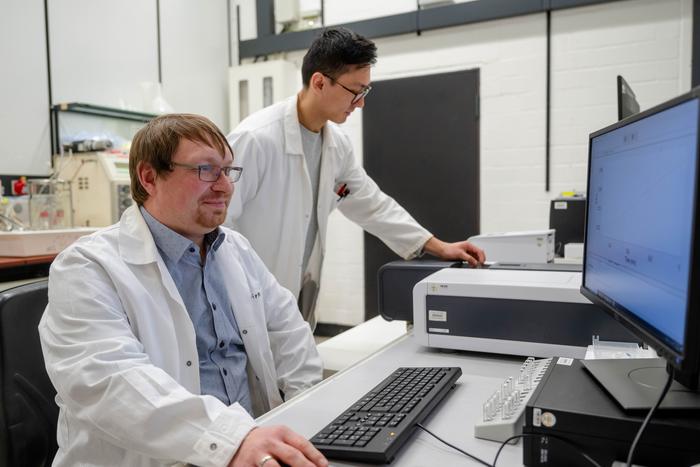
In the vast and microscopic world of bacteria and other microorganisms, a remarkable array of chemical compounds known as secondary metabolites plays a pivotal role in survival and ecological interaction. Unlike primary metabolites that are essential for basic cellular function, these secondary metabolites serve more specialized purposes such as communication, defense, and environmental adaptation. The true diversity and potential of these molecules remain largely untapped, offering a frontier for scientific discovery with implications for medicine and biotechnology. Among these compounds, the kutznerides have recently captured the attention of researchers due to their notable efficacy against certain fungi and Gram-positive bacteria.
Secondary metabolites, despite not being necessary for the survival of producing organisms, contribute significantly to their ability to thrive in competitive and often hostile environments. Dirk Tischler and his colleagues have highlighted the promising potential of these compounds, envisioning their use not only as bioactive agents in new pharmaceutical formulations but also as scaffolds inspiring novel synthetic drugs. Historical examples such as penicillin underscore the transformative power of secondary metabolites, which have revolutionized medicine and saved countless lives.
A particular group of interest is the kutznerides, a class of molecules known for their antifungal and antibacterial activity. Their bioactivity is closely linked to the presence and configuration of distinct functional groups within their chemical structure. The research group led by Tischler has concentrated their efforts on kutznerides bearing a rare and reactive nitrogen-nitrogen bond, known chemically as a hydrazine group. This specific bond type introduces unique chemical properties essential for the molecule’s biological function and therapeutic potential.
What makes this research especially groundbreaking is the team’s ability to not only identify but also manipulate the enzymes responsible for the formation of nitrogen-nitrogen bonds. Such enzymatic functions are exceptionally rare in nature, and comprehending the biosynthetic pathways involved presents enormous challenges. Tischler and his collaborators have isolated novel enzymes that initiate the nitrogen-nitrogen linkage, marking a critical step forward in our understanding of natural product biosynthesis and enzyme engineering.
Leveraging these discoveries, the team employed mutagenesis to optimize these enzymes, enhancing their substrate flexibility and catalytic activity. This approach enabled the enzymes to process a broader range of chemical precursors, expanding the diversity of nitrogen-nitrogen bond-containing molecules that can be biosynthesized. This expansion provides invaluable tools for synthetic biology, where such enzymatic cascades can be harnessed for the production of complex molecules that are difficult to achieve through traditional synthetic chemistry methods.
By engineering a cascade of these enzymes, the researchers demonstrated the capability to convert non-natural substrates into cyclic heterocyclic structures featuring nitrogen-nitrogen bonds. These five- and six-membered rings are particularly significant as they often form the core of bioactive molecules, including many pharmaceuticals. The enzymatic synthesis of such heterocycles from diverse precursors represents a remarkable advancement, potentially enabling the tailored biosynthesis of bespoke therapeutic agents.
One particularly intriguing aspect of the research is the formation of chiral centers during the reaction sequences. Chirality, or handedness, in molecules is crucial in pharmacology since the biological activity of a compound can vary dramatically between different stereoisomers. The team’s enzymatic systems were able to stereospecifically insert chiral centers into the molecular frameworks, a feature that greatly enhances the drug development potential of the synthesized products.
The implications of this research extend beyond fundamental biochemistry and into the realm of drug discovery. The ability to design enzymes with broad substrate scope and high selectivity could revolutionize how complex drug-like molecules are produced. By harnessing the natural catalytic power and specificity of enzymes, pharmaceutical synthesis can become more sustainable, efficient, and innovative, potentially leading to the rapid generation of novel antimicrobial therapies, an urgent need amidst rising antibiotic resistance.
Furthermore, the exploration of nitrogen-nitrogen bond chemistry in biological systems opens new avenues for understanding molecule function and enzymatic mechanisms. Traditional organic synthesis of such bonds often requires harsh conditions and multiple steps, but enzymatic approaches promise milder, more environmentally friendly processes. The insights gained from studying these natural biosynthetic pathways can inspire the design of new catalysts and synthetic methodologies.
This study, appearing in the journal ACS Catalysis, exemplifies the interdisciplinary nature of modern biochemical research, merging enzymology, synthetic biology, and medicinal chemistry. It showcases how detailed mechanistic understanding and protein engineering can combine to push the boundaries of chemical synthesis in living systems, harnessing nature’s molecular diversity for human benefit.
Looking forward, the challenge remains to translate these enzymatic processes into scalable platforms for drug production. Continued research into enzyme structure-function relationships, substrate compatibility, and cascade optimization will be critical. Moreover, integrating these methods with genome mining and metabolic engineering could uncover yet more novel enzymes and pathways, broadening the repertoire of accessible secondary metabolites.
In conclusion, the work of Dirk Tischler and his team illuminates a fascinating aspect of microbial chemistry, revealing promising strategies for creating nitrogen-nitrogen bond-containing heterocycles with applications in drug discovery and beyond. By unlocking the potential of enzyme substrate promiscuity and engineering biosynthetic cascades, the researchers have set the stage for a new era of biocatalysis that could profoundly impact pharmaceutical science and synthetic chemistry.
Subject of Research: Cells
Article Title: Access to Nitrogen–Nitrogen Bond-Containing Heterocycles Through Substrate Promiscuity of Piperazate Synthases
News Publication Date: 11-May-2025
Web References: DOI: 10.1021/acscatal.5c01237
Image Credits: © RUB, Marquard
Keywords: Cell biology, Molecular biology, Omics
Tags: bacterial chemical communicationbioactive compounds in medicineenvironmental adaptation of microorganismsgenome mining for new agentsGram-positive bacteria treatmentshistorical significance of penicillinkutznerides antifungal propertiesmutagenesis in drug discoverypharmaceutical applications of secondary metabolitespotential of untapped secondary metabolitessecondary metabolites in bacteriasynthetic drugs inspired by nature





